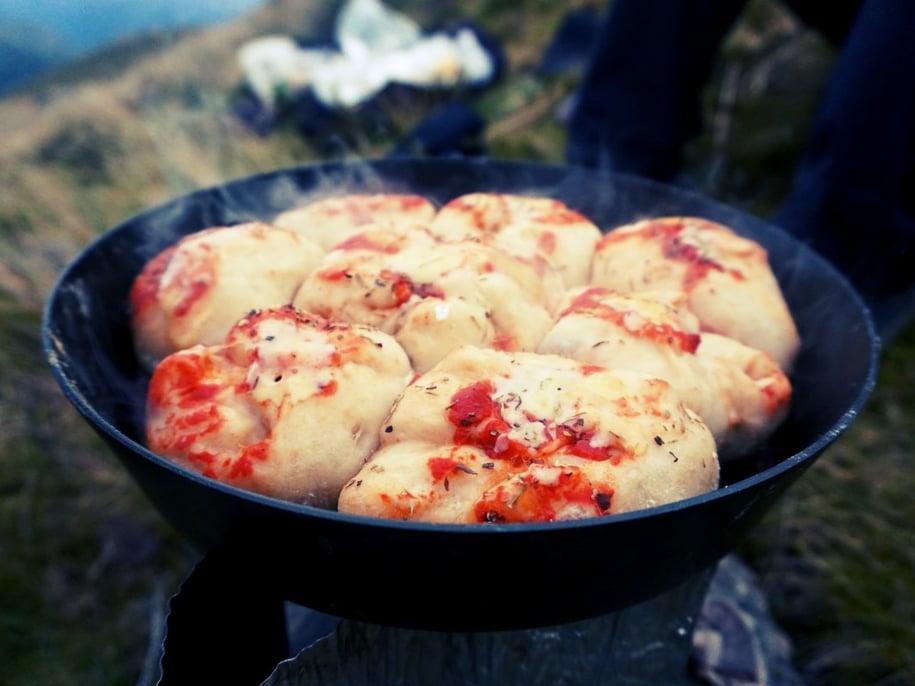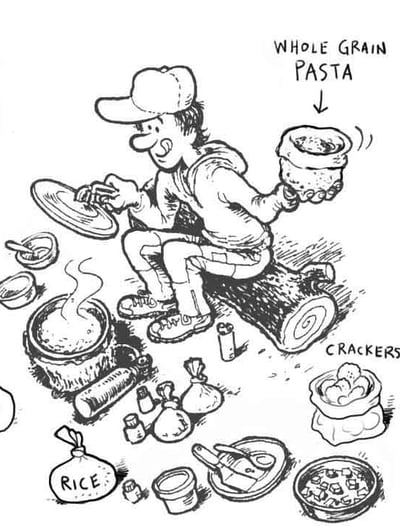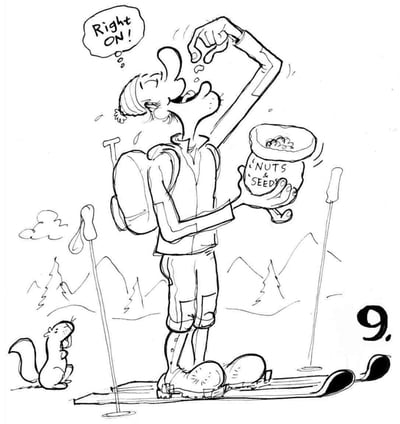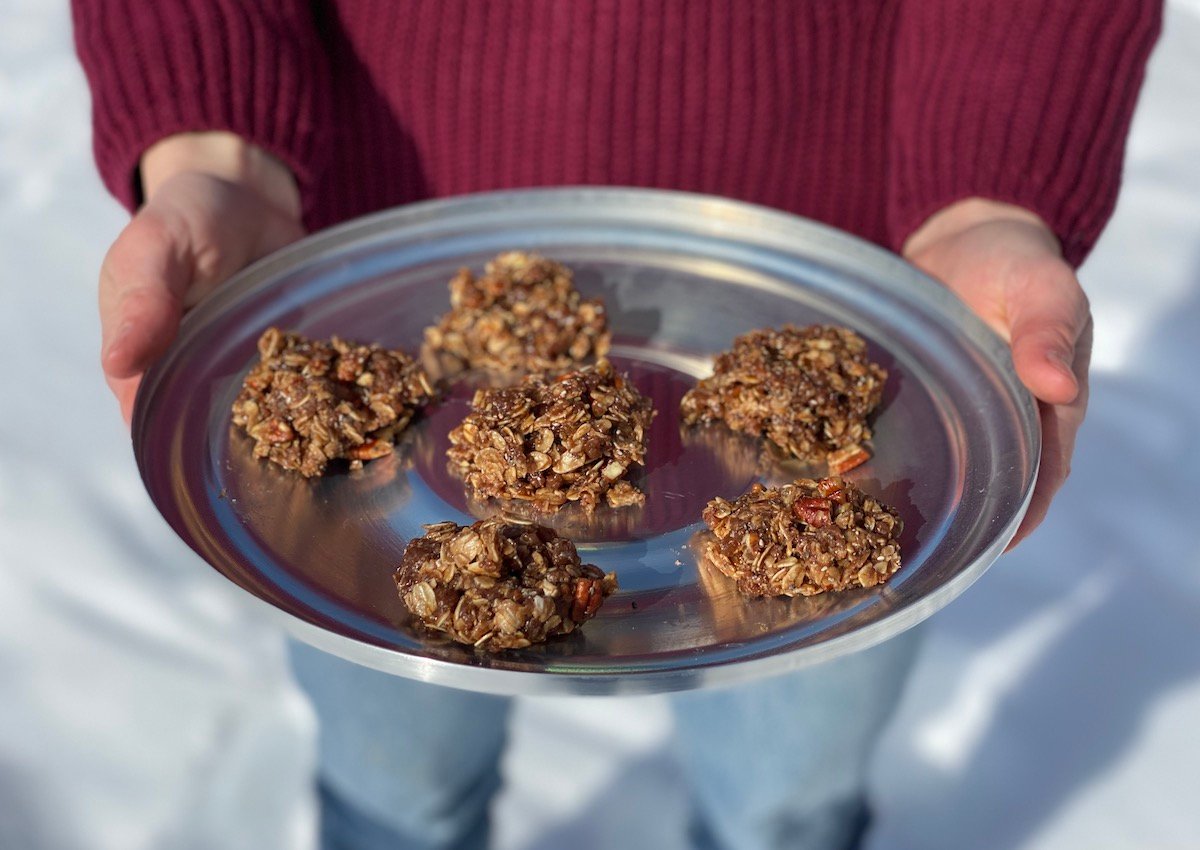
How do you know what to eat, and how much of it, when you're on the trail?
One of the guidelines NOLS uses for food planning is the Backcountry Nutrition Pinnacle, which is basically a food pyramid for planning your meals. And if you're into cookbooks, the NOLS Cookery includes a comprehensive guide to rationing and nutrition for short and long expeditions, plus a pile of delicious recipes.
Read on to see how NOLS breaks down backcountry nutrition, and watch NOLS Instructor Sydney break it all down:
1. Water and Hydration
Exercise and water form the base of how you'll determine what you should be consuming with relation to how much activity you're doing.
Water is the most important nutrient for both survival and optimal nutrition in the backcountry. Most days, we recommend drinking a 1/2 liter of water for every hour of moderately strenuous activity in moderately hot weather. You can also supplement plain water with other liquids like tea or drink mixes. Fluids containing electrolytes, such as sodium and chloride, can help in avoiding the rare but dangerous problems related to overhydration (see Hydration Tips for Camping).
Examples: tea, drink mixes, hot cocoa and soups
2. Grains and Starchy Vegetables

Why this food group? Because it contains carbohydrates, which are most easily converted to energy and are your brain's preferred fuel source. They also contain B vitamins and iron, which are essential for energy production and a healthy nervous system; and vegetable proteins that combine with beans, nuts, and seeds to make the complete proteins necessary for building and repairing body cells.
You need one to three servings at meals, and probably more on active days. A combination of whole and processed grains and starchy vegetables is an appropriate nutritional base for high levels of physical activity. These foods also tend to be quick and easy to prepare in the backcountry, which is perfect for the end of a long day.
Examples: rice, pasta, potatoes, popcorn, cornmeal
3. Beans, Nuts, Seeds, Vegetables, and Fruit

These foods are sources of carbohydrates, fiber, and vitamins and minerals. These foods also contain protein and healthy fats that you need as an energy source and a way to absorb some vitamins and minerals. You should eat around five to eight servings per day, though in the backcountry it's not always possible to get five servings of vegetables a day.
Examples: dried or fresh fruit and vegetables, garlic, peanut butter, veggie burger mix, chili mix
4. Meat, Poultry, Eggs, Fish, and Dairy
These foods are sources of calcium and animal protein, and you only need one to two servings per day. Calcium is important for the structure of bones and teeth as well as muscle contraction. You may use animal proteins to supplement your backcountry ration, but you don't need them in large amounts, or even every day, to meet your nutritional needs.
Examples: powdered milk (cow or soy), cocoa, cheese, summer sausage, powdered eggs
5. Fats and Sweets
Use these sparingly. The types of fats that appear in this group come from sources like butter or summer sausage. They're different, however, than fats you'll find in other groups, such as the essential fats in fish and nuts, or the fats in dairy that are accompanied by other important nutrients (like B vitamins). In the backcountry, we use the carbohydrates in sweet foods and the added calories from fat to support our high activity level, which is why we still need them in small portions.
Fats and sweets also make food tastier, like adding brown sugar to your oatmeal. They can also be an important boost for your psychological health, which is equally as important as your physical health in getting you through the difficult days on the trail.
Examples: vegetable oil, margarine, candy, sauce mixes, cocoa, summer sausage, chocolate
Get recipes like this and more in the NOLS Cookery.
Explore NOLS Backpacking Trips and embark on your own adventure!
Written By
Molly Herber
Molly is a NOLS instructor and writer. She loves the smell of her backpack and does her best writing before 7:00 am. When she's not scouting the next post for the NOLS Blog, she's running and climbing on rocks in Wyoming. Follow her on Instagram @mgherber



